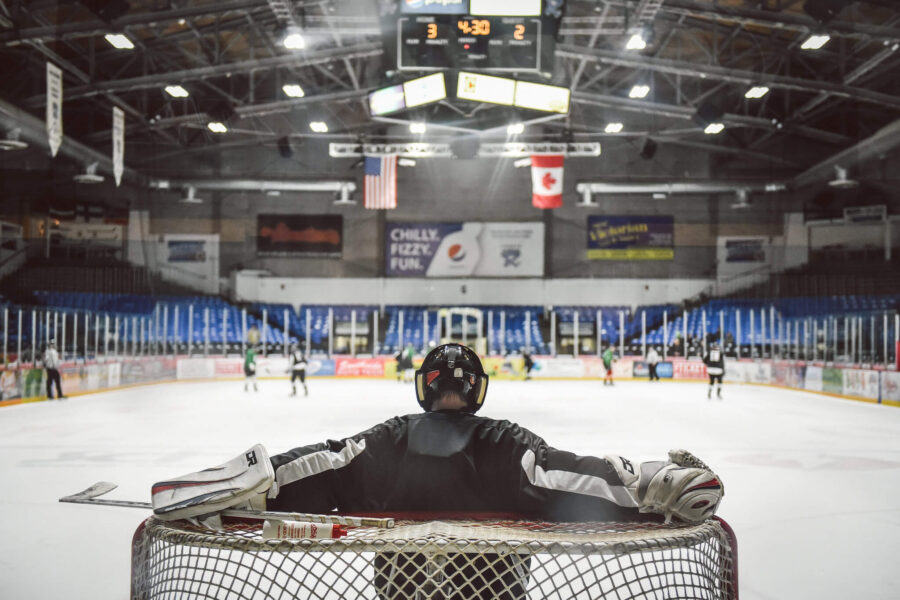Save by Binnington: Watch Hockey’s Star to Improve Your Goaltender's Skills

Prepare your teams for next season by encouraging them to watch their favorite athletes. For goalies, this analysis of Jordan Binnington will get them fired up to get back on the ice.
No position in hockey can flip a team’s fortunes as abruptly as a good goaltender. And there's no better example of this than in St. Louis, where a mid-season goalie switch to a 25-year-old rookie vaulted the Blues from the worst record in the NHL to playing in their first Stanley Cup Final in 49 years.
Jordan Binnington’s ascent is a tale of perseverance. He toiled for five years in the Blues’ minor league system, which included a loan to the Boston Bruins’ AHL affiliate after declining to report to the second-tier ECHL, before he got his shot. His patience has paid off—he’s already one of the franchise’s most prolific in the pipes, setting a single-season team mark for postseason wins.
His almost comically cool demeanor belies a supreme confidence in net. And while goalies are known for being “here today, gone tomorrow”, Binnington has so far shown the makings of being a star in the NHL for a long time.
As video analysis becomes more and more crucial to fostering player improvement at all levels of hockey, coaches have noticed its benefits for goalies especially. Binnington can show young netminders many lessons they can apply to their own game.
Mechanics
Like the great butterfly goalies, Binnington keeps everything in tight, shows sound symmetry, and makes himself big in net. When he makes a highlight-reel save, it’s absolutely spectacular. But those SportsCenter Top 10 appearances are few and far between, mostly because of how technically proficient he is with his positioning.
Great goalies can be manipulative with shooters, setting them up to seize on an opportunity that actually isn’t there. The shooter’s eyes will see the net before they see the puck, and by the time they’ve fired that shot, the open netting they found has closed up. Studying individual opponents’ tendencies with the puck—which corners they like to pick, where the passing lanes are, how they like to approach the net—can give your goalies a lot of ideas on how to exploit offensive players' best instincts.
Glove Work
Some NHL teams love to attack the glove. Binnington has so far been up for the challenge, and in fact the glove may be his best overall attribute.
Because of gravity, it's faster to pull a goalie glove down than raise it up. Take note of the way Binnington sets up as he works to cut off angles. From where he places his glove, he won’t have to raise it at all—anything above the webbing is going to sail over the crossbar. The shooter has essentially two options here: thread a shot into an opening above Binnington’s far shoulder that’s about the size of a softball, or work to try and beat his right pad.
Careful attention to glove placement can make all the difference between an unforgettable night, and one that’s forgettable for all the wrong reasons. Create playlists of clips that showcase the good and the bad from every angle, then share them with your goalies.
Playing the Puck
For every NHL goalie who shows prowess coming out of the net to play the puck (Dallas’ Ben Bishop or Calgary’s Mike Smith), there are just as many that would be better off staying home. If this nifty little toe drag from February is any indication, Binnington belongs in the former group.
Obviously the timing has to be right, and being careless away from the net can have serious consequences. But when done right, the benefits of this style of play are huge. It disrupts the opposition’s forecheck, it can quickly generate sudden breakouts, and it saves defensemen from getting worn down and beat up. The Blues tout some of the best defensive pairings in all of hockey, so this has been a plus.
It’s beneficial for goalies to study up on opponents’ line change processes, and see if there’s an opportunity to catch them mid-change. Video review can play a major role here. Take note, too, of how they like to bring the puck into the zone—sometimes when the puck rims around the back of the cage, there’s an opportunity to skip a quick pass up the ice to a waiting winger.